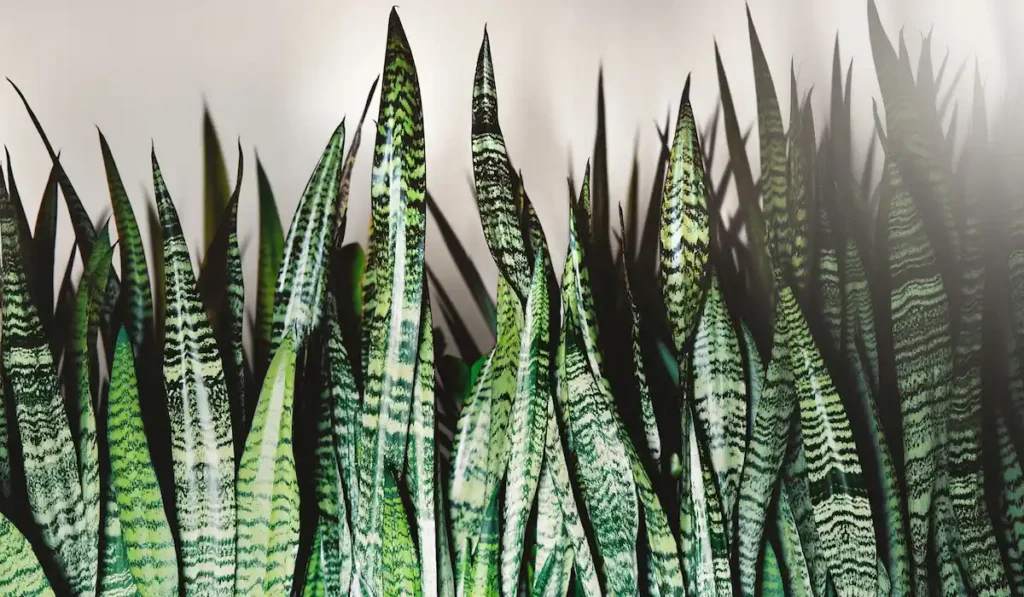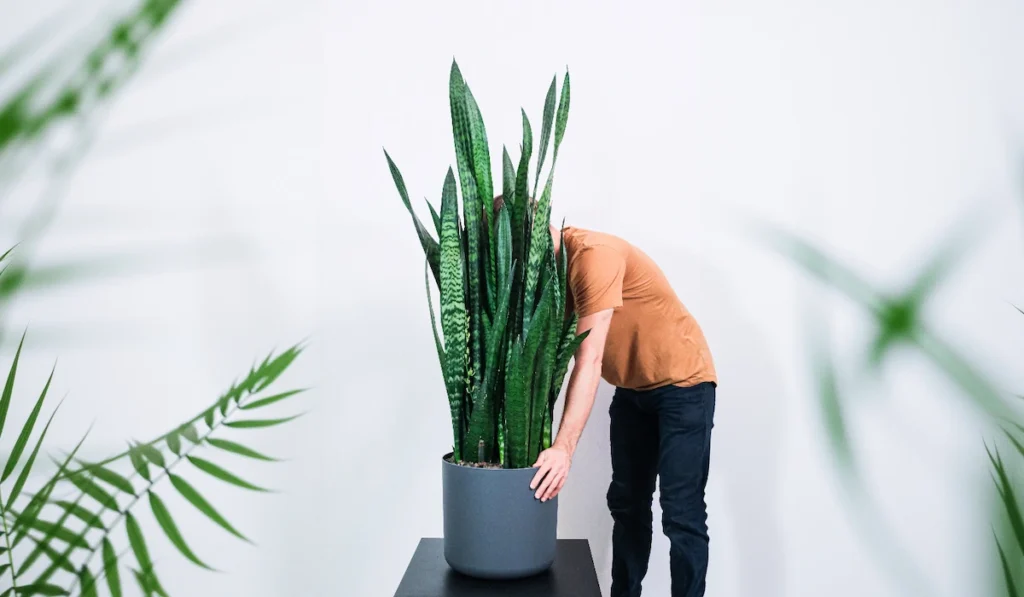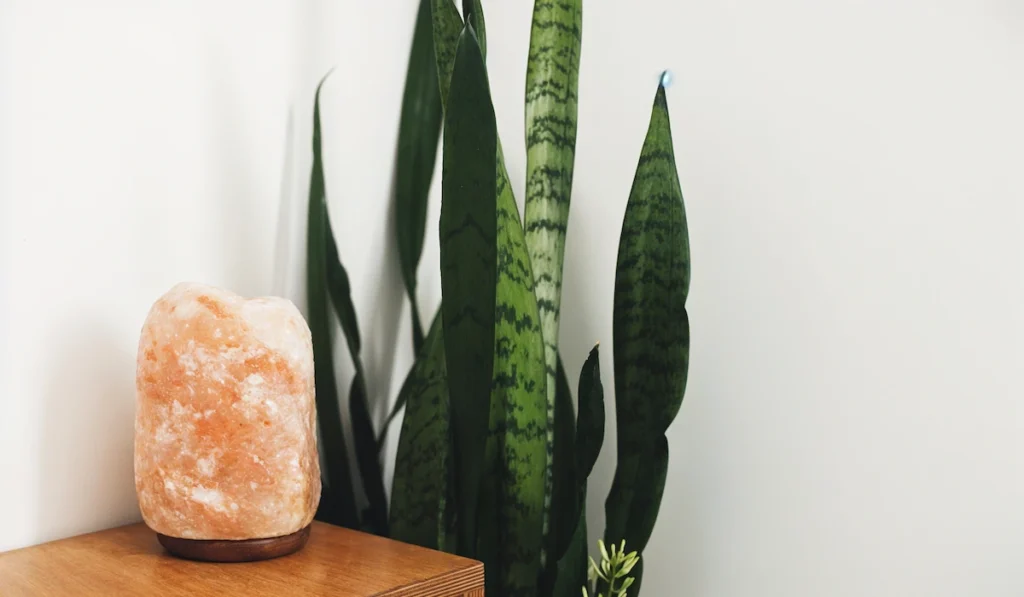A Full Guide About Black Coral Snake Plant
The Black Coral Snake Plant also known as sansevieria black coral is a stunning and practical choice for any indoor space. Known for its striking dark green, almost black leaves with subtle light green patterns, this plant adds a touch of elegance to your home or office. With a typical black coral snake plant height ranging from 2 to 4 feet, it makes a bold statement without taking up too much space.
Beyond its aesthetic appeal, the sansevieria black coral is a natural air purifier, removing toxins and improving indoor air quality. and it thrives on neglect, making it ideal for busy lifestyles.
Ready to unlock the secrets of this incredible plant? Keep reading to learn how to make the most of your Black Coral Plant and keep it thriving for years to come.
Table of Contents
Why Choose the Black Coral Snake Plant?

With so many black coral snake plant benefits, it’s a must-have for any plant lover. Wonder why? Let me explain.
- Air-purifying qualities: This plant can improve indoor air quality by filtering toxins like formaldehyde, benzene, and xylene. Also releases oxygen at night for cleaner air while you sleep.
- Low maintenance: Thrives in low light and requires minimal watering, making it a dream for anyone who wants greenery without the hassle.
- Aesthetic appeal: With their tall, almost black leaves with light green patterns, black coral snake plants introduce a sleek and modern aesthetic, making them a perfect addition to your room.
- Boosts mental health: Its calming presence and air-purifying abilities help reduce stress and improve focus, creating a relaxing environment.
- Natural solution for allergies: It can reduce airborne allergens, making it a great choice for allergy sufferers.
How to Care for Your Black Coral Snake Plant?

Caring for a snake plant is super easy. Black Coral Snake Plant is no different. Here are all the care tips you need to keep your plant happy and healthy!
Lighting requirements
The Black Coral Snake Plant is a hardy and adaptable plant. It does best in bright, indirect light or dappled sunlight, but it can also handle some gentle morning or evening sun. Just be sure to keep it away from harsh afternoon sunlight, which can damage its leaves.
One of the best things about this plant is that it can survive in low light, making it perfect for offices or dim corners. If its leaves start looking pale or stretched, it needs more light. If you see brown spots or crispy edges, it’s getting too much sun.
Temperature and humidity
This plant is easy to please when it comes to temperature and humidity. It prefers warmth, thriving in temperatures between 65-80°F (18-27°C). Keep it away from cold drafts and avoid temperatures below 50°F (10°C), as it’s sensitive to extreme cold.
When it comes to humidity, this plant is a champ. It adapts well to average household humidity and can even handle dry air, making it perfect for most indoor environments. No need for extra misting or humidifiers—just let it do its thing!
Watering needs
The sansevieria black coral is a drought-tolerant plant, so it’s better to be underwater than overwater. Water it every 2-3 weeks, letting the soil dry out completely between waterings. In winter, when the plant’s growth slows, water even less frequently.
Signs of overwatering include yellowing leaves or a mushy base. Underwatering may cause the leaves to wrinkle or dry out. When in doubt, wait a few extra days before watering—this plant thrives on neglect!
Soil and potting mix
The Black Coral Snake Plant thrives in a well-draining potting mix. A cactus or succulent mix works perfectly, or you can create your own blend using peat, perlite, and sand. Good drainage is key to keeping the roots healthy and preventing rot.
When choosing a pot, go for one with drainage holes to let excess water escape. A slightly snug pot is fine, as snake plants prefer being a bit root-bound. Just make sure it’s sturdy enough to support the plant’s tall, upright leaves.
Fertilizing
Fertilizing is simple for this plant. Use a balanced liquid fertilizer diluted to half or quarter strength. Feed it once a month during the growing season (spring and summer). In fall and winter, when growth slows, reduce or stop fertilizing altogether.
Snake plant black coral don’t need much fertilizer, but a light nutrient boost during active growth keeps them healthy. If the leaves start looking pale or growth slows, it might be a sign of nutrient deficiency. Stick to a light feeding schedule to avoid over-fertilizing, which can harm the plant.
Pruning and grooming
Simply remove any dead or damaged leaves at the base to keep it looking neat and healthy. Use clean shears to trim these leaves all the way down.
For grooming, wipe the leaves occasionally with a damp cloth to remove dust. This not only keeps the plant looking shiny but also helps it breathe better. With these simple steps, your Black Coral Snake Plant will stay vibrant and beautiful with minimal effort.
How to Propagate Your Black Coral Snake Plant?
Spring or early summer is the best time to propagate Sansevieria black coral. This gives the cuttings or pups the best chance to root and thrive.
There are two easy ways to propagate:
- Propagation by Leaf Cuttings
- Propagation by Division
Here’s a step-by-step guide for these 2 methods.
1. Propagation by leaf cuttings
- Step 1: Cut a healthy leaf near the base using a clean, sharp knife or scissors.
- Step 2: Let the cutting dry for 2-3 days to form a callus. This prevents rot.
- Step 3: Plant the callused end in well-draining soil. Keep the soil lightly moist.
- Step 4: Place the cutting in bright, indirect light. A humid environment helps speed up rooting.
- Step 5: Be patient! Roots and new shoots may take weeks or even months to appear.
2. Propagation by division
- Step 1: Remove the plant from its pot during spring.
- Step 2: Locate the rhizomes (underground stems) and offsets (pups).
- Step 3: Use a clean knife or spade to separate the pups from the mother plant.
- Step 4: Let the cut rhizomes dry for 1-2 days to callus.
- Step 5: Plant the pups in fresh, well-draining soil. Water lightly and keep in indirect light.
How to Repot Your Snake Plant Black Coral?

Repot your Sansevieria black coral every 2-3 years or when it outgrows its current pot. Choose a pot that’s slightly larger than the old one, and make sure it has drainage holes.
Signs your plant needs repotting include:
- Roots growing out of the drainage holes.
- The plant becomes top-heavy or unstable.
- Soil drying out too quickly after watering.
Here’s a quick guide to repotting your plant:
- Remove the Plant: Lay the pot on its side and gently wiggle the plant out. If stuck, loosen the soil or cut a plastic pot.
- Inspect the Roots: Shake off excess soil and trim any damaged or mushy roots with clean scissors.
- Prepare the New Pot: Add fresh, well-draining soil. For pots without drainage, add lava rocks or gravel at the bottom.
- Repot the Plant: Place the plant in the center, fill with soil, and leave 1 inch of space at the top.
- Water and Care: Water lightly if the soil is dry. Place in bright, indirect light and let the soil dry between waterings.
What are the Common Problems of Black Coral Snake Plant and their Solutions?
Pests and diseases
Common pests:
- Spider mites – Tiny pests that cause yellow spots and webbing. Wipe leaves with a damp cloth and use insecticidal soap.
- Mealybugs – White, cotton-like bugs on leaves. Remove with a cotton swab dipped in alcohol or use neem oil.
Common diseases:
- Root rot – Leaves turn yellow and mushy due to overwatering. Let soil dry between waterings and ensure the pot has drainage holes.
- Fungal infections – Dark spots or mold on leaves. Improve airflow, keep leaves dry, and use a fungicide if needed.
Prevention tips:
- Avoid overwatering.
- Use well-draining soil and a pot with drainage holes.
- Wipe dust off leaves to keep pests away.
- Keep plants in a ventilated area with indirect light.
Troubleshooting common issues
Yellowing leaves:
- Cause: Overwatering, poor drainage, or lack of light.
- Fix: Water only when the soil is dry and move the plant to a brighter spot.
Drooping leaves:
- Cause: Overwatering, underwatering, or sudden temperature changes.
- Fix: Check soil moisture, adjust watering, and keep the plant away from cold drafts.
Brown leaf tips:
- Cause: Dry air, too little water, or excess fertilizer.
- Fix: Increase humidity by misting, water slightly more, and avoid over-fertilizing.
How to revive an unhealthy plant?
- Trim off any dead or damaged leaves.
- Check the roots—if they are mushy or black, cut off the rotten parts.
- Repot in fresh, well-draining soil in a pot with drainage holes.
- Place in bright, indirect light and water only when the soil is dry.
- Be patient! Recovery takes time, but with proper care, your plant will thrive again.
Decorative Uses of Black Coral Snake Plant

The Black Coral Snake Plant is a stylish and versatile addition to any space. Its tall, dark green leaves with light green patterns add a modern touch to any space of your house and office.
For your living room, place it near a sofa or corner to make a statement. In the bedroom, it not only enhances the decor but also improves air quality by releasing oxygen at night. For a workspace, its low-maintenance nature and sleek look make it ideal for desks or shelves. You can also place it near doorways to welcome guests with a touch of greenery.
Is the Black Coral Snake Plant Toxic?
Yes, the Sansevieria Black Coral is toxic to pets and toddlers if ingested. It contains saponins, which can cause nausea, vomiting, or diarrhea.
For households with pets or children, place the plant out of reach. Consider using high shelves or hanging planters. If ingested, contact a doctor or vet immediately. With proper care, you can enjoy this plant safely while keeping everyone protected.
FAQs
No, the Black Coral Snake Plant (Sansevieria trifasciata ‘Black Coral’) is not the rarest variety of snake plant. It is widely available and popular due to its striking dark green leaves with light green horizontal stripes. However, some snake plant varieties, like Sansevieria ‘Moonshine’ or Sansevieria ‘Silver Blue,’ are considered rarer because they are harder to find and less commonly sold.
The Black Coral Snake Plant can grow between 2 to 3 feet (60-90 cm) tall indoors. In ideal outdoor conditions, it may reach up to 4 feet (120 cm).
Growth depends on light, watering, and pot size:
- Bright, indirect light encourages faster growth.
- Well-draining soil and infrequent watering prevent root rot.
- A larger pot allows more root space, promoting taller growth.
The Black Coral Snake Plant thrives in bright, indirect light, but it can also survive in low light or artificial lighting. However, too little light may slow its growth, while too much direct sunlight can scorch its leaves.
Best lighting conditions:
- Bright, indirect light for faster growth.
- Low light areas are fine but may lead to slower growth.
- Avoid direct sunlight to prevent leaf burn.
A well-draining, sandy soil mix is best. The ideal soil should prevent water retention to avoid root rot.
Best soil mix:
- Cactus or succulent mix (good drainage).
- Regular potting soil + perlite or sand for aeration.
- Avoid heavy soils that hold moisture.
To encourage faster growth, provide the plant with optimal care:
- Bright, indirect sunlight (low light slows growth).
- Water only when the soil is dry (avoid overwatering).
- Use a well-draining potting mix.
- Fertilize lightly in spring and summer (once a month with a diluted succulent fertilizer).
